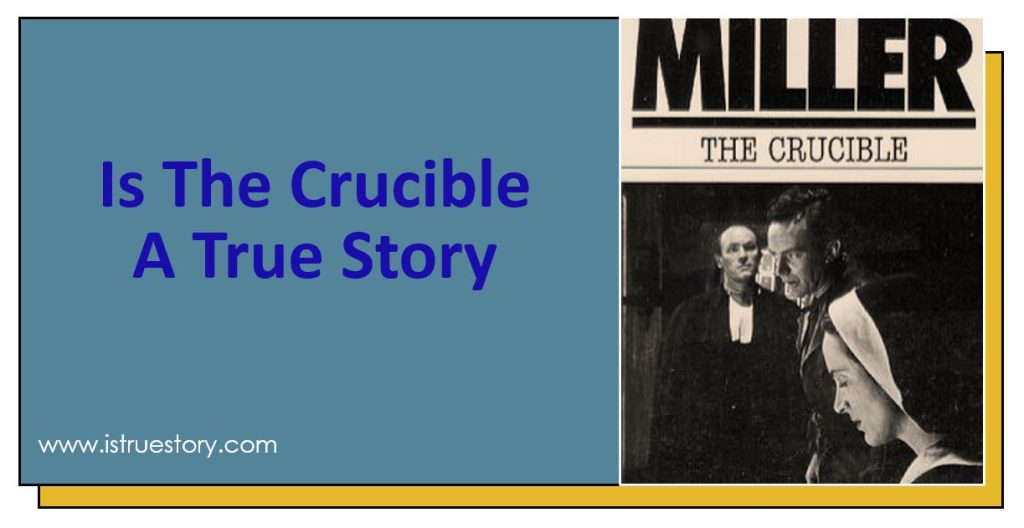
How Much of The Crucible is True?
“The Crucible” is a historical drama based on real events, but Arthur Miller took creative liberties in crafting the story. While the Salem witch trials were real, the play combines fact and fiction to highlight the dangerous effects of mass hysteria and scapegoating. For instance, some characters are altered or fictionalized to enhance the drama and underscore its themes.
Is Abigail Williams a Real Person?
Yes, Abigail Williams was a real person. She was one of the initial accusers in the Salem witch trials. In reality, Abigail was around 11 years old during the trials, but Miller depicted her as a teenager to develop a more complex narrative. In the play, Abigail has a romantic relationship with John Proctor, which is not supported by historical evidence. This change adds tension and complexity to the story, showcasing the personal vendettas and jealousies that fueled the hysteria.
Was John Proctor a Real Person?
John Proctor was indeed a real person. He was a respected farmer in Salem and one of the many who were accused and executed for witchcraft. In “The Crucible,” Proctor is portrayed as a man struggling with his conscience, trying to maintain his integrity in the face of overwhelming pressure. This characterization highlights the theme of personal integrity and moral courage that Miller sought to convey through the play.
Who Were Real People in The Crucible?
Many of the characters in “The Crucible” were real people involved in the Salem witch trials. Besides Abigail Williams and John Proctor, key figures include Reverend Samuel Parris, Elizabeth Proctor, and Reverend John Hale. These characters, although based on real individuals, are dramatized to explore themes of power, fear, and justice. Reverend Samuel Parris was the minister of Salem Village, and his daughter and niece were among the first to exhibit strange behaviors. Elizabeth Proctor was John Proctor’s wife, accused of witchcraft but spared execution due to her pregnancy. Reverend John Hale was a minister called to Salem to investigate the possibility of witchcraft. He eventually became a critic of the trials as they spiraled out of control.
What is the Main Point in The Crucible?
The main point of “The Crucible” is to highlight the dangers of hysteria, the power of false accusations, and the consequences of a society driven by fear. Miller uses the Salem witch trials as a metaphor to criticize the McCarthy-era “witch hunts,” where accusations of communism ruined lives without evidence. The play emphasizes the importance of integrity, personal responsibility, and the courage to stand up against unjust systems.
What is the Idea of The Crucible?
The central idea of “The Crucible” revolves around the destructive power of fear and how it can lead to irrational behavior and unjust persecution. Through the characters’ struggles and the unfolding chaos in Salem, Miller illustrates how individuals are pressured to conform, leading to the loss of personal integrity and humanity. The play suggests that in times of crisis, individuals must be willing to question authority and act according to their conscience.
What Does The Crucible Symbolize?
“The Crucible” symbolizes the destructive nature of hysteria and the impact of false accusations. The term “crucible” refers to a severe test or trial, reflecting the harsh scrutiny faced by the characters. The play serves as a warning about the consequences of blind adherence to authority and the need for critical thinking and moral courage. The witch trials in Salem are a metaphor for any situation where fear and suspicion override reason and justice.
What is The Crucible Best Known For?
“The Crucible” is best known for its gripping portrayal of the Salem witch trials and its allegorical critique of McCarthyism. It won the 1953 Tony Award for Best Play and has been adapted into various films and television shows, solidifying its place as a classic American drama. Its themes of integrity, courage, and the dangers of mass hysteria continue to resonate with audiences today, making it a timeless work that prompts reflection on the balance between individual conscience and societal pressure.
For those looking to explore more about “Is The Crucible a True Story”, its characters, and its historical context, IsTrueStory is an excellent resource for finding story facts and determining how true stories are adapted into plays and films.
Conclusion
“The Crucible” remains a compelling work of literature, blending historical fact with creative storytelling. While some aspects of the play are fictionalized, it provides a powerful commentary on human behavior and the consequences of fear-driven societies. By examining the real events and characters behind “The Crucible,” we gain a deeper understanding of the play’s significance and its enduring relevance in contemporary discussions about justice, integrity, and the human condition.

I am Jeremy Jahns – Your Cinematic Explorer
Immerse in movie reviews, Hollywood insights, and behind-the-scenes stories.